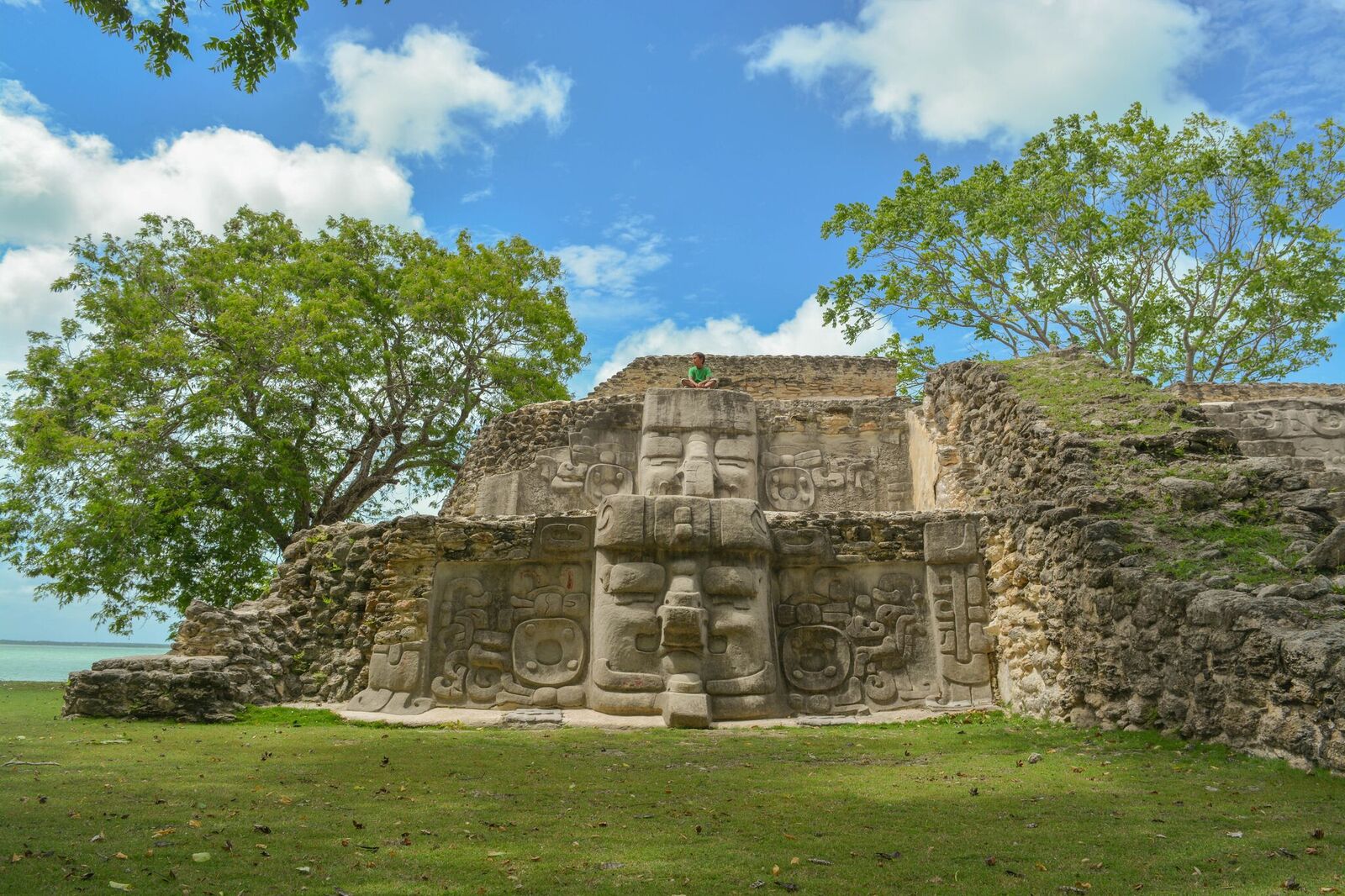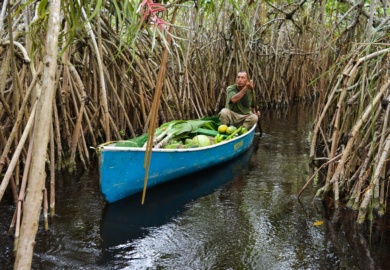By Lebawit Lily Girma
Strategically placed between Mexico, the northern Cayes, and Orange Walk, this northernmost corner of Belize offers a lesser-crowded, off-the-beaten track escape that first-time visitors might otherwise miss. Fishing villages with iridescent turquoise shores, key archeological sites, and a diverse population of Mestizo, Mennonites, and East Indians—who settled here in the 19th century to work on sugar cane fields—are just a few of Corozal’s surprises. In town, examine the gun turrets at Fort Barlee, used during the 19th century Caste War, and the colorful Corozal Town Hall mural depicting the district’s history. The district’s diversity is celebrated in town at Art in the Park every month, with local arts and crafts, music, and food.
Mayan princess Tzazil-Ha and Spanish conquistador Gonzalo Guerrero were the first to marry at a Maya site—Corozal’s Santa Rita Archeological Site—and gave birth to the Mestizo culture. Cerros Archeological Site, tucked amid jungle across the Corozal Bay, was the first Maya coastal trading center and had commercial exchanges with Tulum, Mexico.
Nature tours are plentiful from this northern tip of Belize. Hop on a ferry ride from town to the eastern fishing village of Sarteneja for days of fishing, kayaking, and sunsets. Originally called Tza-ten-a-ha by the Mayans, before the Spanish arrived in the 16th century, it’s also where Belize’s traditional wooden sailboats are built. Time your visit for Easter, and you’ll experience Sarteneja’s lively annual sailing regatta.
On the village’s outskirts, excursions await into the Shipstern Nature Reserve, one of the most ecologically diverse areas of Belize—counting approximately 300 bird species, 270 butterfly species, manatees, and crocodiles—boasting mangrove shorelines, rainforests and botanical trails.


